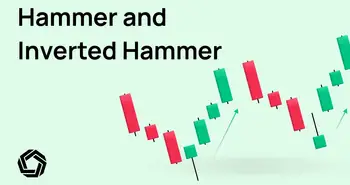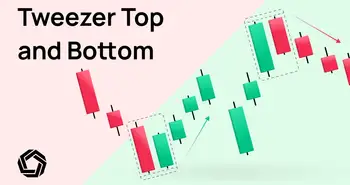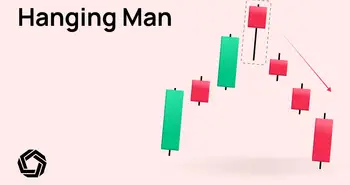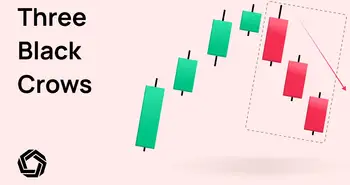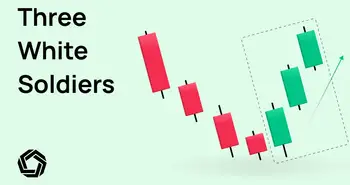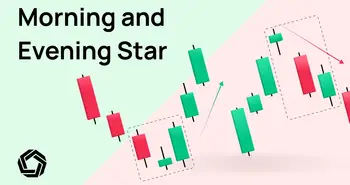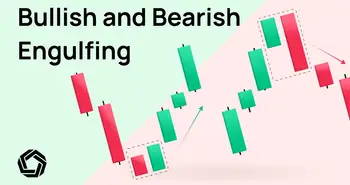Bullish and Bearish Harami Patterns
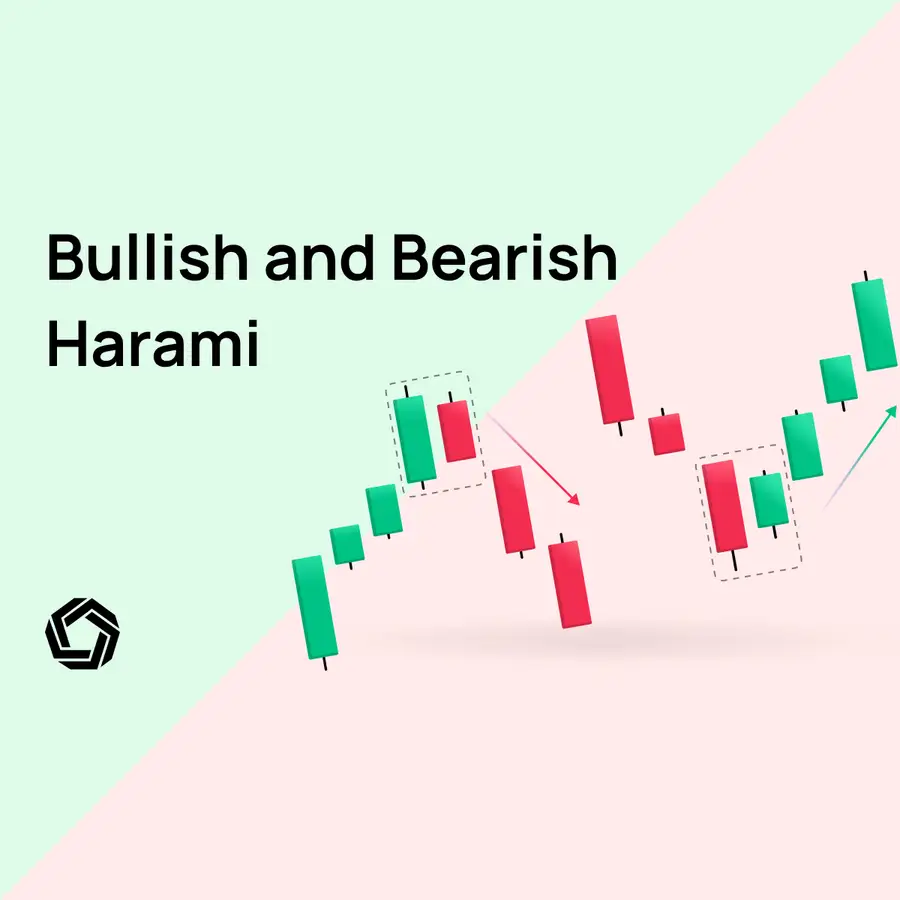
The Bullish and Bearish Harami are two well-known patterns. We will examine both in this post and provide you with essential tips on using them in your trading approach. Even though not always so easy to spot, we will give you a great overview of how to spot and include them in your trading arsenal. Also, a great trader needs a broad portfolio, so we'll give you three alternative trading approaches specifically suited to markets like Stocks, Cryptocurrencies, Commodities, Forex, and even NFTs.
In general successful trading with candle charts requires an understanding not only of the candle patterns but also of where the candle pattern appears and in the context of risk/reward analysis. One should always consider the risk/reward aspect before placing a trade based on a candle pattern.
Bullish Harami Pattern
The Bullish Harami is a technical analysis pattern commonly used to signal a potential trend reversal. While there are stronger reversal signals such as engulfing patterns, morning stars, or piercing patterns, the Bullish Harami still holds value in identifying key market turning points. The pattern involves a small real body, also known as a spinning top, contained within an unusually long red or green body, which the Japanese call a harami, meaning “pregnant” in their language. The second candle of the harami can be green or red, and if both candles are green, it is referred to as a “green-green harami.”
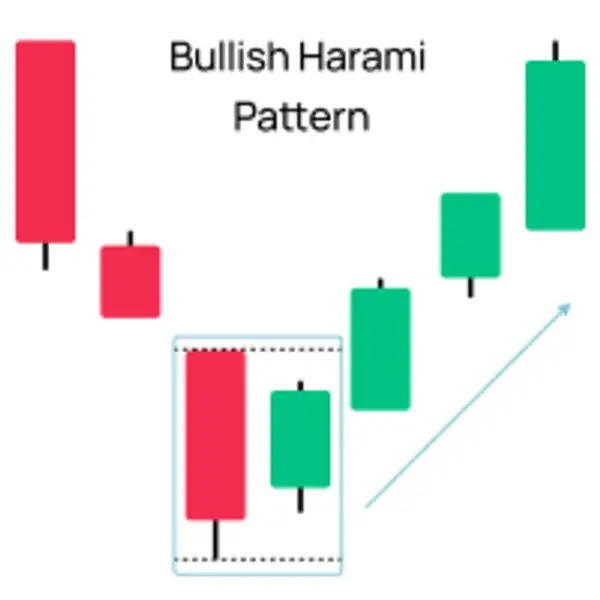
According to the Japanese, the harami pattern indicates a moment of indecision in the market, as it appears to lose its breath. It is worth noting that unlike the engulfing pattern, the harami's first candle is long, while the second is short. Additionally, the colors of the two candles do not necessarily have to be opposite, although they often are. The key aspect of the harami is that the second real body is contained within the first real body, even if the shadow of the second candle is taller.
Another similar pattern to the harami is the Harami Cross, which is a variation of the harami that includes a Doji candle preceding a long green or red candle. This pattern is considered a more potent reversal signal than the regular harami by the Japanese and is sometimes called the “petrifying pattern.” The idea is that the preceding trend has been frozen or petrified in preparation for a reverse move. Harami crosses are more effective at indicating tops than bottoms.
What Does a Bullish Harami Pattern Look Like?
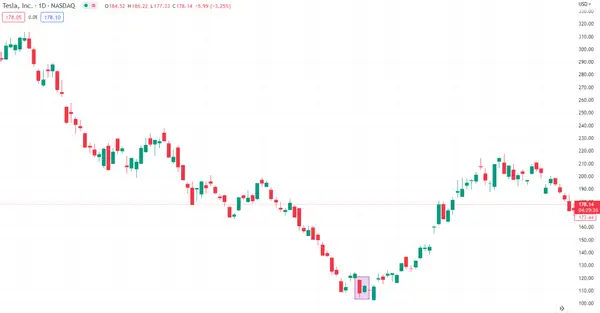
Bearish Harami
The Bearish Harami is a candlestick pattern that signals a potential reversal in a bullish trend. Although it may not be the strongest reversal signal, it is still a valuable tool for you to use when identifying market turning points.
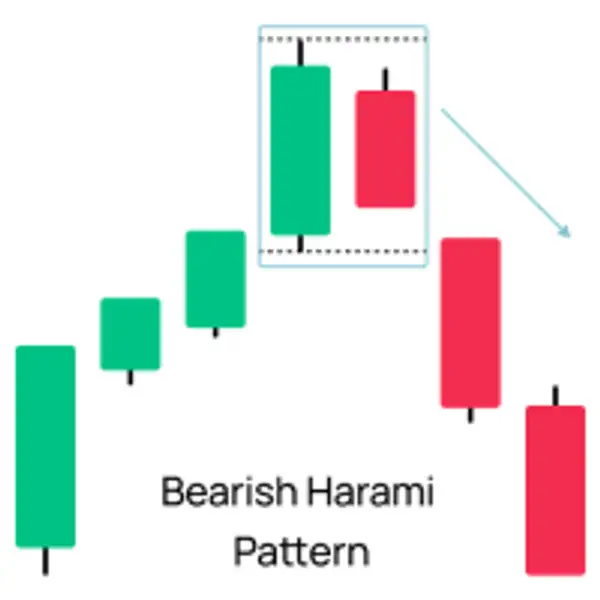
Like the Bullish Harami, the Bearish Harami pattern includes a small real body, or spinning top, within a long red or green body, which the Japanese call a harami, meaning “pregnant” in their language. However, in the Bearish Harami, the first candle is long, while the second is short. Additionally, the second real body is contained within the first real body, even if the shadow of the second candle is taller.
What Does an Bearish Harami Pattern Look Like?
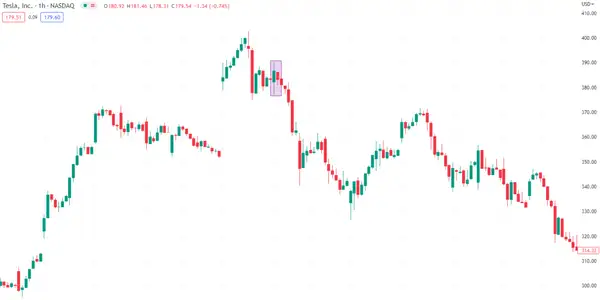
Bullish and Bearish Harami Pattern Strategy Ideas
The next three strategies are universal and could be applied to any asset class.
Strategy 1: Advance/Decline Indicator
Utilizing the Advance/Decline (A/D) strategy is a popular approach to analyzing candlestick patterns. A rising A/D index value is an indication of the market gaining momentum, whereas a falling value may suggest that the market is losing momentum. As an example of a live trading scenario, we chose to trade the Dow Jones Industrial Index (INDU).
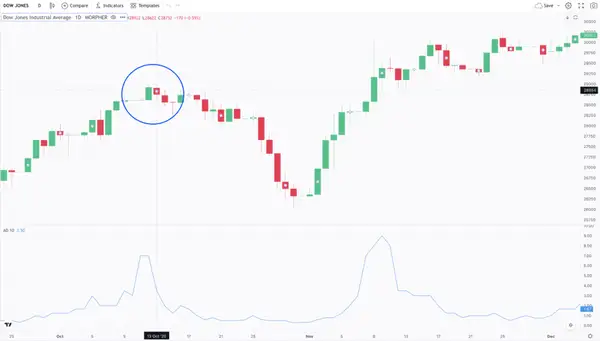
Upon analyzing the daily chart, it becomes apparent that an uptrend has been in progress since the end of September. This is further substantiated by the rising A/D index. However, caution is warranted as the sharp uptick in the A/D index post-10th October could potentially signal an overheated market, thereby paving the way for a reversal pattern and bearish haramis. It's worth noting that the harami patterns are not the strongest signals and should be used in tandem with other indicators.
On the 13th of October, the market provided a small red body preceding a long green candle, indicating a Bearish Harami Pattern. Moreover, the A/D index began to decline once the candle had closed, providing further confirmation that the trend may have reversed. Subsequently, it was recommended to take a short position with a stop loss, in case the pattern did not confirm. Fortunately, the short position proved to be fruitful, yielding almost 10% profit by the end of the month.
Trading Rules:
- Look for an uptrend
- Spot the candlestick pattern
- See that the Advance/Decline Indicator has reversed
- Set a Stop-Loss above the top
- Go Short
Strategy 2: McGinley Dynamic
The McGinley Dynamic is a popular tool to identify Harami patterns in volatile markets. The McGinley Dynamic has been hailed as a superior indicator compared to traditional moving averages as it adjusts itself better to financial markets.

While hunting for candlestick patterns, it's worth noting that volatile markets provide a plethora of highs and lows, making it an ideal hunting ground for you. In this scenario on the Shopify chart, the market has been in a general downtrend, which temporarily reversed in March of 2021. However, as the market is still in a bigger downtrend, the reversal may have been just a quick retracement.
On April 16th, a perfect Bearish Harami Pattern formed, indicating the commencement of a new downward trend. It's worth noting that the pattern formed above the trendline, suggesting that the market might be overextended. Conversely, if the Bearish Harami pattern had formed below the trendline, it would not have been as strong an indicator.
Furthermore, on April 22nd, a weak bullish harami pattern appeared. However, you are rather advised against trading weak patterns, especially when they go against the prevailing trend. In this case, going against the trend would have been unwise, even though the pattern was below the trendline.
Trading Rules:
- Look for the trend
- Spot the candlestick pattern
- Confirm that the McGinley Dynamic changed direction
- Set a Stop-Loss above the top/bottom
- Go Short if Bearish Harami or Long if Bullish Harami
Strategy 3: Know Sure Thing Indicator and Fisher Transform Indicator
Our third strategy focuses on trading with two trend indicators, the Know Sure Thing and Fisher Transform Indicators. The KST generates trading signals when it crosses over the signal line, while the Fisher Transform highlights when prices reach extremes. You should look for overbought or oversold conditions, which may indicate turning points in the asset's price.
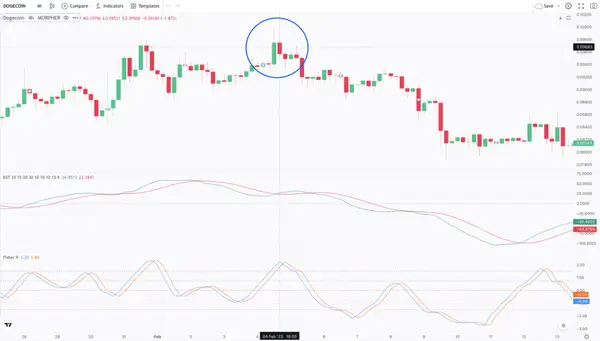
Here we were trading this strategy on Dogecoin on a 4-hour chart. The chart shows a sideways market, with Dogecoin coming from a bullish trend that peaked at the end of January. The price then recovered without strong movements until February 3, when it briefly broke the 0.098 line according to the Fisher Index. However, the candle closed below this line, indicating that it did not break out. The next day, a Bearish Harami pattern formed with the Fisher Index at the top, suggesting it may be a good time to short the asset. While Harami patterns are not always reliable, the Fisher Index gave a valid signal as the last big green candle did not break out.
However, the Know Sure Thing indicator broke the line in a bullish direction and had not yet confirmed a retracement. You should be aware that this indicator lags behind, so waiting for confirmation of the trend is advised. As time passed, the upward momentum of the Know Sure Thing indicator decreased, while the Fisher Index reversed, confirming the validity of the Harami pattern and indicating it was time to short the asset.
Trading Rules:
- Look for an uptrend
- Spot the Bearish Harami Pattern
- Check that the red line on the Know Sure Thing indicator crossed the green line
- Check that the blue line crossed the orange line on the Fisher Transform indicator
- Go Short
Best Platform to Trade Candlestick Patterns
When trading candlestick patterns, having the right platform is crucial to success. Here are some key factors to consider when choosing the best platform:
- Maximum Flexibility: Look for a platform that allows you to go long or short on any asset and use leverage to profit from even the smallest signals in any direction.
- Variety of Assets: A good platform should offer a diverse range of assets to trade from, including stocks, cryptocurrencies, commodities, forex, and unique markets. This ensures you can always find useful patterns and profitable markets to trade.
- Great Indicators and Advanced Chart View: The platform should have great indicators and an advanced chart view that allows you to save templates you have created and combine multiple indicators to get the best edge possible.
- Infinite Liquidity: Choosing a platform with infinite liquidity is important, so you can close every position at the exact price you aimed for and have no slippage.
- Zero Fees: Look for a platform that offers zero fees, so even if you want to scalp some quick profits, you do not lose on the fees. Combined with fractional trading, you can get in on every position for less than $1.
If you're looking for a platform that offers all of these features, Morpher is a great choice. It's specifically designed to provide the best trading experience possible, with maximum flexibility, a wide range of assets to trade, great indicators and an advanced chart view, infinite liquidity, and zero fees.

Conclusion
In conclusion, these patterns have proven to be valuable tools for making profitable trades. By incorporating the Bullish and Bearish Harami patterns into your trading strategy and using technical indicators to identify market trends, you can maximize your chances of making informed trading decisions.

Disclaimer: All investments involve risk, and the past performance of a security, industry, sector, market, financial product, trading strategy, or individual’s trading does not guarantee future results or returns. Investors are fully responsible for any investment decisions they make. Such decisions should be based solely on an evaluation of their financial circumstances, investment objectives, risk tolerance, and liquidity needs. This post does not constitute investment advice.

Painless trading for everyone
Hundreds of markets all in one place - Apple, Bitcoin, Gold, Watches, NFTs, Sneakers and so much more.

Painless trading for everyone
Hundreds of markets all in one place - Apple, Bitcoin, Gold, Watches, NFTs, Sneakers and so much more.

